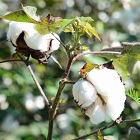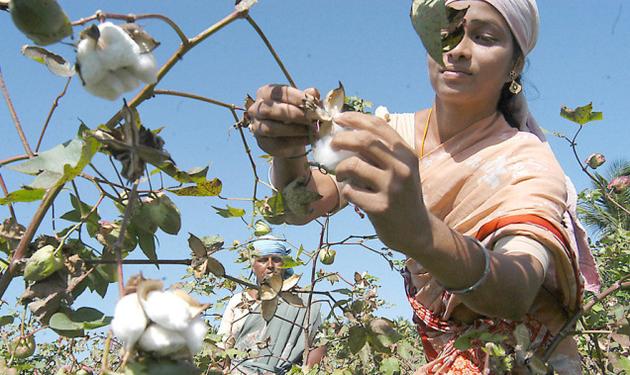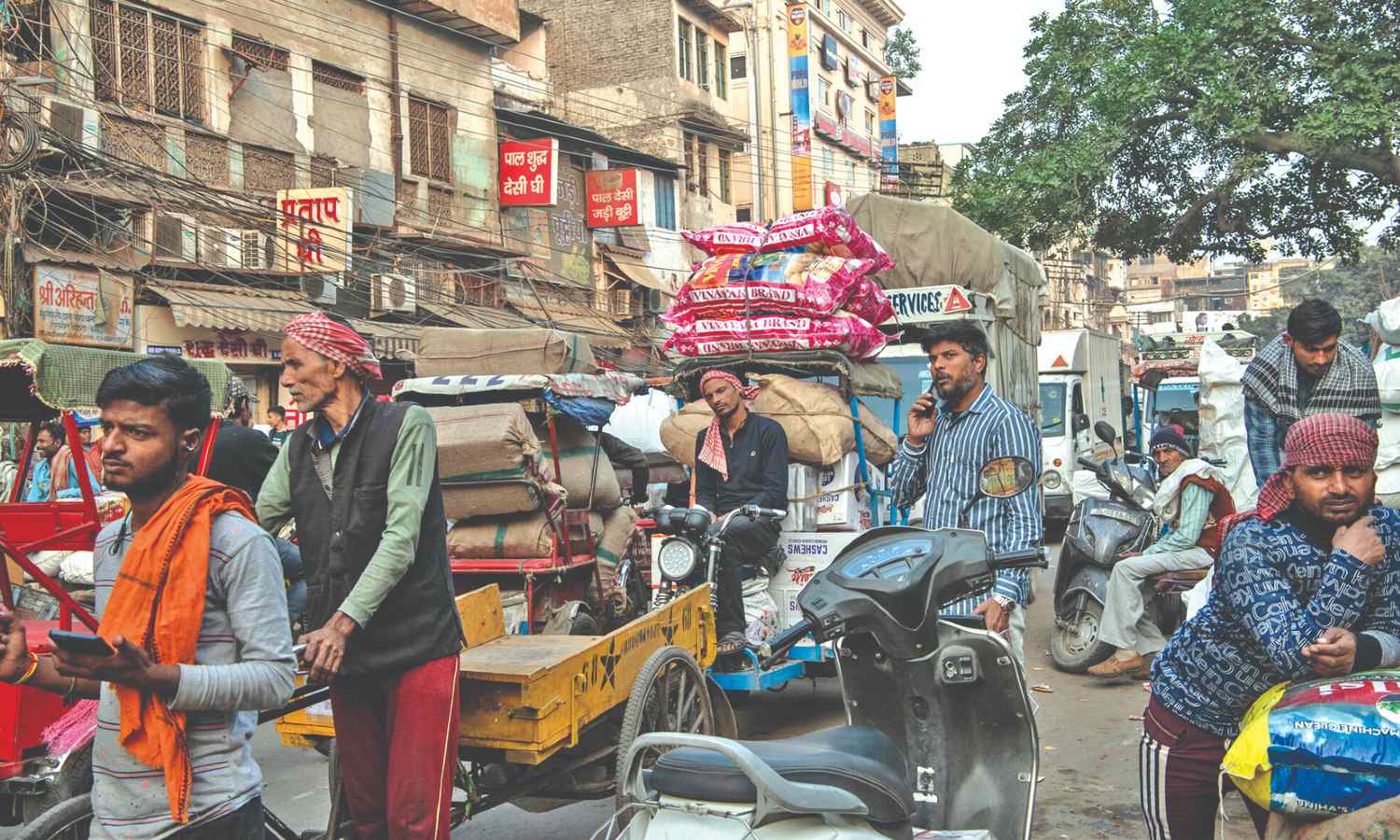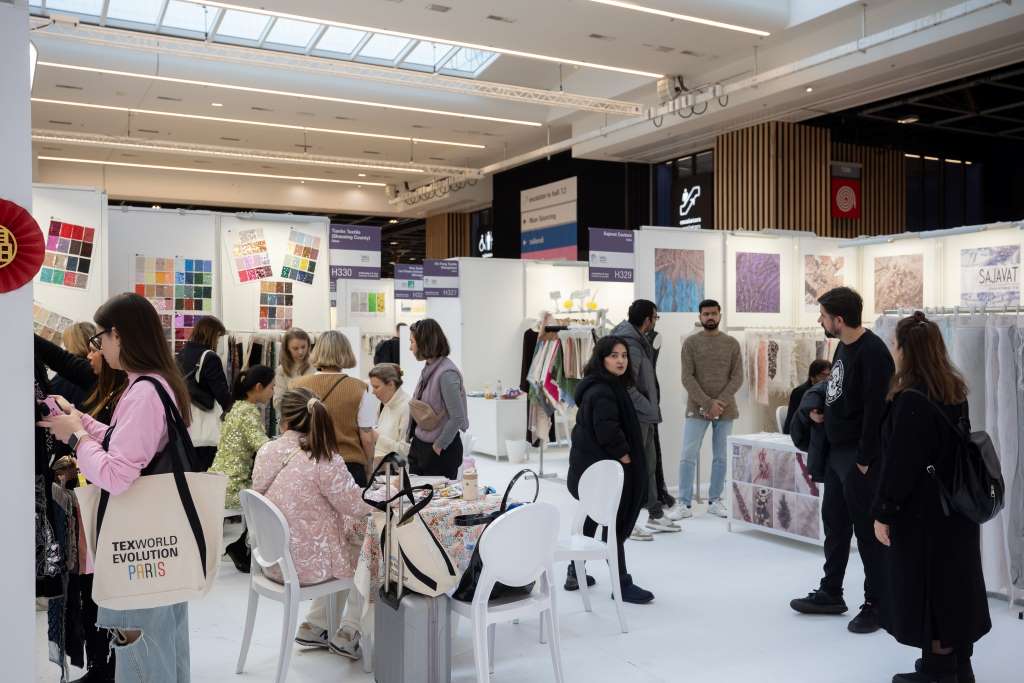FW
"In order to build a new business model for cotton farming, an American is working together with Indian farmers. More than 50 per cent of India’s population is in agriculture and related industries. They make up nearly 20 per cent of the country’s GDP. Yet, stories of farmer suicides have been plaguing the country throughout the last 5 years. In 2013, for instance, nearly 12,000 farmers committed suicide; that would be on average more than 40 deaths a day."

In order to build a new business model for cotton farming, an American is working together with Indian farmers. More than 50 per cent of India’s population is in agriculture and related industries. They make up nearly 20 per cent of the country’s GDP. Yet, stories of farmer suicides have been plaguing the country throughout the last 5 years. In 2013, for instance, nearly 12,000 farmers committed suicide; that would be on average more than 40 deaths a day.
Cotton is one of India’s specialty crops; India is also the second largest producer of cotton, after China. Yet more than 90 per cent of cotton is produced using conventional methods and with GMO seeds. The trouble with GMO seeds is that they cannot be used over and over again. That means farmers have to invest more to buy more seeds after every harvest. As a matter of fact, organic farming would have disappeared if ChetCo wouldn’t have pushed for it.
The Hyderabad-based Chetna cooperative set up six seed banks in the last two years — all are concentrated in Orissa where cotton has become a cash crop in
Orissa where cotton has become a cash crop in
recent times. The seed banks are helping bring back a collection of non-GMO seeds to the Indian subcontinent. Seeds are only the first step, though. Historically, organic cotton farmers have sold their organic harvest for conventional prices because of a lack of demand. The Chetna Co-op was built to not only facilitate organic cotton farming in the country, but also help these farmers find a market.
How did it start?
Three years ago, New York-based Godfrey was working at Loomstate, an American brand selling organic cotton clothing sourced from India. While Loomstate was one of the small number of companies interested in rectifying the cotton supply chain, Rhett Godfrey, Founder of the Chetna Coalition realised there was power in numbers. So at the Textile Exchange’s Organic Cotton Round Table in Istanbul, Turkey, he asked other clothing retailers to commit a percentage of their supply chain to organic cotton, sourced from the Chetna Cooperative. 80 per cent of the brands were not interested. They said, go do it first and then come back to us.
ChetCo is aiming to build a CSA model. In the past three years, ChetCo’s membership has been doubled, and they are buying 320 per cent more cotton fibres. As a result, the co-op’s organic cotton sales have gone from 17 per cent (in 2013) to more than 49 per cent (in 2015/16 harvest).
Besides Loomstate, there are about a dozen brands working on organic cotton supply chain. They include Boll and Branch, a New Jersey-based company, that produces organic cotton bedding, towels, and blankets; PACT, specialising in the basics (undies, camis, leggings); Nudie Jeans, a Swedish brand with retail outlets in the US, making organic cotton denims. For them, the smaller the better mantra works the best and they are in hurry to expand their horizons, which can be challenging at this juncture. For them, growth has to come with social welfare.
In this line, Colorado-based PACT has invested in the infrastructure of these cotton-growing communities by updating tribal boarding schools for girls, giving them bikes to get to & fro, providing business training for women, and supporting cooperative training and research. The result has been lower drop-out rates and more girls staying in school.
Currently, 16 brands have committed to ChetCo, working with nearly 35,000 small-scale organic cotton farmers and 2,000 garment workers. By 2015, the company had produced over two million organic cotton items using this supply chain. These numbers definitely indicate sings of good times, yet the rest is up to the fashion police to put across the message of promoting such businesses with social cause.
American Apparel may be sold to Canadian clothing maker Gildan Activewear. American Apparel has filed for bankruptcy. This year, American Apparel laid off at least 500 workers as it cut production. An additional 3.500 employees may lose their jobs in January.
However, Gildan has no interest in buying American Apparel’s 110 stores in the US and 83 others around the world including UK, Ireland, Germany, Spain, Canada, Japan and Australia. The Canadian clothing company is more interested in buying some of American Apparel’s manufacturing plants in the US. But most production will probably move to Gildan’s manufacturing hubs in Central America and the Caribbean where it’s much lower cost than anywhere in the US.
Gildan Activewear bid $66 million to acquire American Apparel’s Apparel’s intellectual property rights and some other assets. American Apparel, based in Los Angeles, began as a wholesale T-shirt business in 1998. But the hoped-for turnaround of the clothing manufacturer and retail chain—which has long grappled with shrinking sales and an outsize store footprint—did not happen. A plan to improve online selling didn't pay off, and, at a time when shoppers are going online in greater and greater numbers, American Apparel watched its online sales fall.
A collaboration between the British Fashion Council (BFC) and Google will bring to life creativity, heritage and craftsmanship of British fashion. A new digital platform featuring content and stories from top British designers and fashion insiders has been created for anyone around the world to enjoy, for free. The platform will provide a single destination to educate and inspire future generations of young fashion creatives, designers and students.
BFC and Google have teamed up for content from fashion icons -brands, designers, makers and craftspeople, creatives, photographers, stylists and models - and used technology to tell their stories. Visitors will be able to watch top brands - from Burberry to Vivienne Westwood - feature in specially curated digital exhibits through innovative and immersive digital experiences. There are over 1,000 assets to explore, including over 20 multimedia exhibits, 25 videos and three virtual reality experiences, all accessible from anywhere in the world, on desktop, laptop or mobile.
Visitors can also explore rich, archival materials from top British fashion houses sorting their searches by color and chronology. They will be able to get close to British Fashion Council’s biggest characters and moments and explore profiles of the fashion industry’s key players, from Naomi Campbell to Christopher Bailey. Users will also be able to go behind-the-scenes of top craftspeople and producers of British fashion.
Fed up with non-availability of infrastructure including natural gas and paucity of funds, the the Pakistan Textile City Limited (PTCL) has decided to wind up. The voluntary winding up process has already begun. This was revealed in the National Assembly Standing Committee meeting on Textile Industry which met under the chairmanship of Khawaja Ghulam Rasool Koreja recently.
The committee was briefed about the closure of Pakistan Textile City Project in Karachi and its resolve to sell the land and Plastics Technology Centre (PTC). The committee expressed its reservations over the closure of Pakistan Textile City Project, Karachi and observed that due to mismanagement and corruption, the debt of textile city has exceeded to Rs 2.4 billion.
The committee directed the ministry to sell out 250 acres of its land for payment of outstanding debt. It also said that efforts should be made to make it operational by involving Chinese/foreign companies for its betterment. It was informed that the company owes a debt of Rs 2.4 billion to the National Bank of Pakistan out of which Rs 1.3 billion were spent on the purchase of land at Port Qasim and Rs 1 billion have so for been incurred as interest on loan.
On a daily basis the markup payable is Rs 700,000 approximately. These challenges could be easily handled by selling 200 acres of land to K-Electric for setting up a coal-fired power plant.
Everest Textiles USA, a unit of Everest Textile in Tainan City, Taiwan, will spend $18.5 million to bring a sports fabric weaving and finishing operation that will employ 610 to Forest City that in Rutherford County about 65 miles west of Charlotte along US Highway 74. The company expects to start production of the fabric either in the second or third quarter next year, says Tom Johnson, interim director of the Rutherford County Economic Development Commission.
Everest Textiles will take over an existing building in Forest City that measures almost 400,000 sq ft to create the plant. Workers there will weave, dye and finish the fabric which will be used in sports apparel. It’s the first US operation for Everest Textile. The Taiwanese company now supplies apparels to include Nike, Columbia and Patagonia from factories in Taiwan, China and Thailand.
Scott Chen, VP, Everest Textile said the company is known for innovation. They position itself a leading global enterprise and commits to contribute to human society by providing innovative, environmentally friendly and comfortable textile products to the industry and consumers. Everest Textiles qualifies for about $3.1 million in state and local incentives. The largest is a $3 million state Job Development Investment Grant that will be paid to Everest Textiles over 12 years.
Purchasing goods on the net is quick and easy. This method is being used more and more in the industrial B2B sector. And using this method, Karl Mayer offers its customers the ‘Webshop Spare Parts’. This online platform, for quick and easy ordering of spare parts, launched at ITMA 2015 has been getting excellent feedback ever since. It is a clear sign that customers are using Webshop Spare Parts more often. According to an official of the company, the reason for this high level of acceptance is that it is easy to use and the availability is completely transparent: anything listed is also ready for dispatch.
From the middle of October 2015, the range of products available to order has been extended to include pattern discs and chains. Another new feature of the Webshop Spare Parts is that it gives users various rights of use. On the basis of a defined authorisation key, specific authorisation is given to read, store and order articles, so that the customers can retain their internal buying procedures and manage them optimally.
Extending the functions, progress has also been made with expanding customer base. At ITMA ASIA + CITME 2016, the nod has been given for the Webshop Spare Parts to go into operation in China. In view of this success, Axel Wintermeyer and his team are already considering future developments. There are plans to integrate Karl Mayer’s Technical Textiles Business Unit into the Karl Mayer Webshop Spare Parts next year.
The Central government has extended the export entitlement quota for readymade garments & knitwear, yarn and fabrics and made-ups to the US, Canada and European Union for one year with effect from January 1, next year. ‘The government hereby decides to extend the operation of the residuary provisions of yarn, fabrics & made-ups export entitlement (quota) policy for a further one year with effect from 1 January, 2017,’ reads a notification issued by the Ministry of Textiles.
The government has also extended the operation of residuary provisions of garments and knitwears export entitlement (quota) policy for a one more year with effect from January 1, 2017. Garments and knitwear export entitlement policy is applicable with respect to countries where such exports are covered by restraints under the provisions of the agreement on textiles and clothing.
Export entitlements will be allotted only to exporters registered with the competent registering authorities as per the export-import policy prevailing from time to time. Quantities that become available from time-to-time on account of surrenders, flexibilities or otherwise shall also be allocated under the First Come First Served (FCFS) system.
Earlier, the government had decided to enforce operation of residuary provisions of garments and knitwear export entitlement (quota) policy and yarn, fabrics & made-ups export entitlement (quota) policy initially for one year with effect from January 1, 2005, and extended the same from time-to-time. These provisions had been extended up to December 31 this year.
A new study by Exim Bank has found that around 15 per cent of total jobs including both IT, BPO and material goods such as garments in India are related to India’s exports sector. The total number of jobs supported by aggregate Indian exports registered an increase from about 34 million in 1999-2000 to 62.6 million in 2012-13 with a growth rate of 3.4 per cent per annum. This is higher than the pace at which India, as a whole, has been able to increase employment opportunities for its citizens.
The report says employment growth has been sluggish despite India’s fast economic growth since the 1990s. The key drivers of jobs exports growth has been the garments & textiles, gems & jewellery, cotton textiles, communication and electronic equipment, motor vehicles, food products, metal products and leather footwear sectors. While the total exports from India to other countries is around $25 billion per month or about $300 billion per year, the total GDP of India is around 1.8 trillion. This translates to a share of around 17 per cent in total GDP and indicates that the contribution of exports to total employment is around the same as its share in the total organised economy.
However, the study pointed out that the share of exports in total economy is increasing every year. Almost half of the export-related jobs are indirect. This means that they are created at the level of vendors and partners of exporters. Indirect job creation increased significantly in recent years from 38 per cent in 2007-08 to 50 per cent in 2012-13.
Backward linkages, particularly from manufacturing to agriculture and services, have become an important source of export related job creation in the country, it said. The study identified manufacturing to be the one with the largest potential to generate employment, both directly as well as in agriculture and services through backward linkage effects.
Euratex held its 5th convention in association with the Marché des Soies on November 25 in Lyon. The event was organised by French members’ federations of the Euratex namely Union des Industries Textiles (UIT) and Union Française des industries de Mode et Habillement (UFIMH).
The convention was dedicated to the role of Europe in servicing creative industries in the presence of more than 110 participants who shared ideas and visions on how the textile and clothing creative industries are tackling the challenges to maintain and support creativity. The event had broad international participation from more than 20 countries (business, research centers, industry associations and media).
In his welcome address, Euratex president Serge Piolat underlined to remain competitive, European companies have to invest relentlessly in innovation and skills to support creativity embedded in highly innovative products and processes. Companies have to continue to invest in such area and to use all legal means to protect those competitiveness assets. He explained the current organisation of Euratex in three poles and gave examples of positives results for the industry in each of them: trade policy, sustainability and R&D.
It is almost a month since the Prime Minister announced the move to scrap the Rs 500 and 1,000 notes. And one of the worst-hit commodities market has been that of cotton. In the aftermath of demonetization, the cotton market in Andhra Pradesh has plunged into a deep crisis as transactions have almost come to a halt. Prices too have slumped by roughly Rs 1,000 per quintal.
The crop is grown widely in Krishna, Guntur, Prakasam, and Kurnool districts and to an extent in the two Godavari districts. The ginning mills most of them located in Guntur district, supply cotton to textile mills in other states like Maharashtra, Tamil Nadu, Gujarat and Karnataka. After demonetisation, the ginning mills are in a crisis and they are unable to purchase cotton through brokers due to liquidity crunch. If trade sources are to be believed, the market has been hit hard and almost 70-80 per cent of the transactions have come to a halt.
A month ago, quality cotton was selling in the range of Rs 5,300-5,500 per quintal. Prices have now declined to Rs 4,300-4,500 per quintal and farmers are unwilling to sell at these rates.
On the other hand, the Cotton Corporation of India (CCI) has opened more than 40 cotton purchase centres in the State but prices are much less than the prevailing market price at Rs. 4,100 per quintal. Resultantly, farmers are unwilling to sell cotton at CCI purchase centres. The net result is that the cotton market is almost at a standstill after demonetisation. Trade circles and the farmers are desperately waiting for release of enough cash to revive the market.












